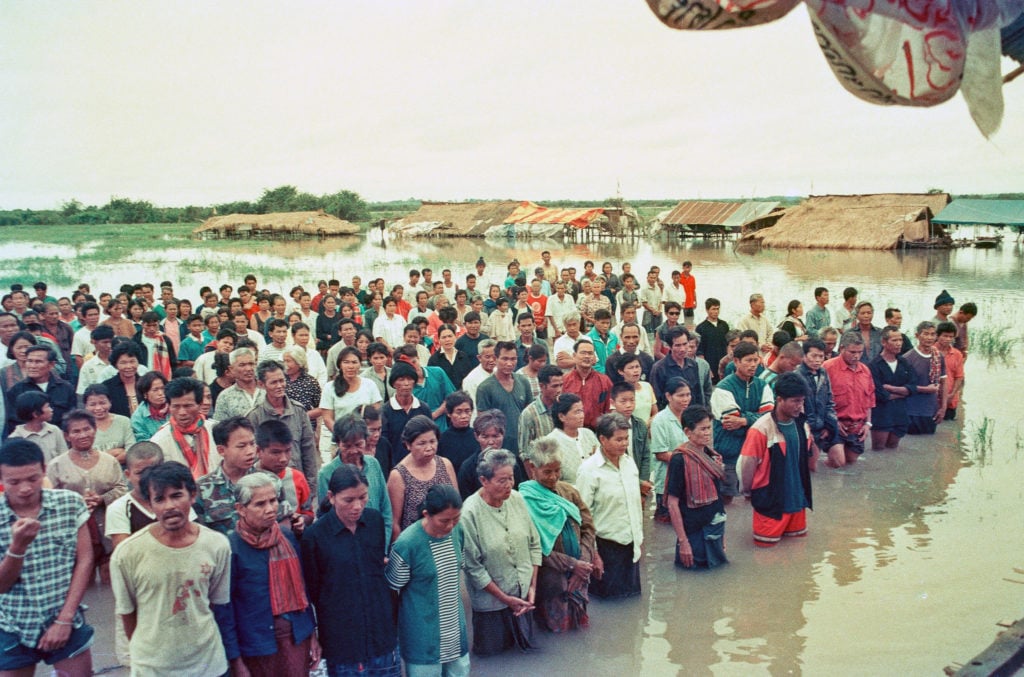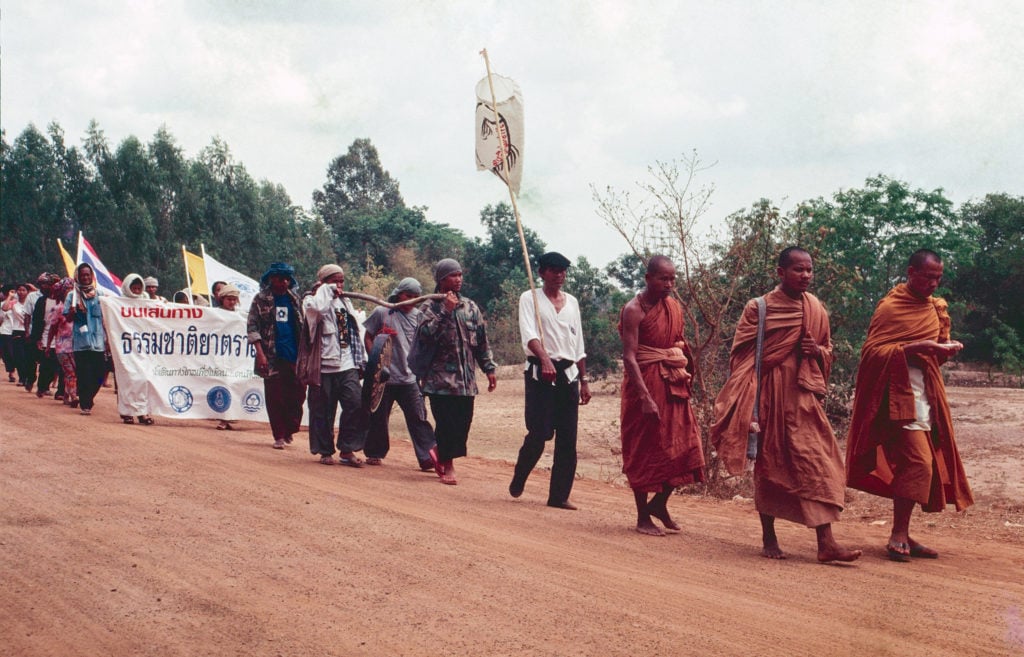In 1992, an environmental struggle between local communities and the government began in Si Saket province of Northeast Thailand, when the government built the 17-meter-high Rasi Salai Irrigation Dam with little transparency or discussion with local villagers. Blocking the flow of the Mun River flooded a vast area of land that the villagers had utilised for generations.
The struggle over Rasi Salai is less known than that over the Pak Mun Dam, its larger, older sibling in neighbouring Ubon Ratchathani Province. Both sit on the Mun River, but Rasi Salai has received much less coverage over the years despite still impacting local people 30 years on.
The area submerged was a unique wetland ecosystem, one of the largest and most important in Thailand. This wetland, which naturally flooded during the rainy season, created a fertile environment that supported local communities by providing food, resources and a place to graze their cattle. Once submerged, villagers lost land and access to vital sources of income that ultimately lead to a decline in their social and cultural identity.
With gates to the wetland now closed for eight months of the year, often more, the dam has caused the ruin of thousands of villagers. The reservoir has not alleviated irrigation problems in the arid plains around the Mun River and instead has caused ongoing land conflicts that have ended a traditional model of self-sufficiency that was the pride of the local people.
Since then, affected communities involving thousands of villagers have been fighting for monetary compensation for the loss of land and income, as well as also ecological rehabilitation of the remaining area.
In early 2020, Bangkok-based British photographer Luke Duggleby visited Rasi Salai to see how the communities continue to be affected by the dam. Fascinated by Thai social movements and environmental struggles, particularly those related to the Assembly of the Poor, he had researched a lot about the issue. “When you talk about Thai community struggles related to dams most people will have heard about Pak Mun. Whilst smaller in size, Rasi Salai received much less attention despite also having severely impacted local communities for decades,” explains Luke.
On that first trip, he visited the Wetland People’s Association, a stone’s throw from the dam itself and part of the Assembly of the Poor’s Rasi Salai chapter. There they showed him a collection of old film and colour negatives taken during the early days of the struggle. As a photographer who had started his career using film, Luke was fascinated by the collection.
“In one of the buildings, in an old metal filing cabinet sat thousands of colour negatives slowly fading away in the humidity. Having worked with film in the past, I knew that eventually the chemicals would slowly degrade to a point where there would be no image left,” said Luke.
These images were taken over the years by four local amateur Thai photographers and community members, Sanun Chusakul, Pairor Sujinprum, Juthathip Damrongtrairat and Pranee Makhanun. They document an important part of this community struggle, showing protests and activities of resistance, as well as ways of life that now no longer exist. “The historical importance of these images was something I couldn’t just let disappear,” said Luke.
Pranee Makhanun, who works at the Wetland People’s Association and contributed to the collection herself, explained why she wanted to keep the old photographs rather than throw them away.



“They are indispensable memories of the Pak Mun people. They show the history of the people’s movement and will tell the next generation that ‘Dad and Mom fought so hard to protect natural resources for the next generation.’ This was a fight between the authorities and the people. The people are not fools. The photos tell us, ‘We can gain nothing without struggle. Rallying and taking the street are our legitimate rights as citizens.’ These old pictures can tell the truth when time has gone by.”
Luke returned to Bangkok and, along with French journalist Laure Siegel, was able to secure a grant from the Earth Journalism Network to returning to Rasi Salai and produce a story about the community today and the wider issue of dams in the region. The funding also allowed the community to build a light box and buy a scanner, which the journalists taught the community how to use.
Over the next few months, they scanned almost 2,000 images that are now safely secured as digital images, a small selection of which is shown below. The scans aren’t perfect, as the chemicals in many of the negatives had already started to degrade. But having the images saved, whether the colours are true or not, is enough.

The first generation of villagers who began this fight for justice are now old, most in their seventies and eighties, and many have passed away. But with a visual record now digitally preserved, this small social struggle, an intrinsic and controversial part of local history, will live on for future generations to see.
Remembering Rasi Salai in Pictures














This project was made possible though funding provided by Earth Journalism Network. This report was first published by Prachatai.





